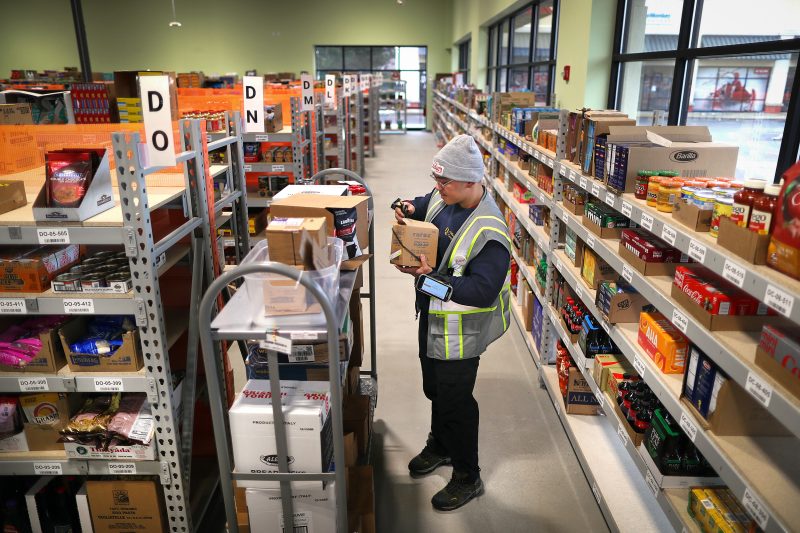
U.S. economy added 311,000 jobs in February, exceeding expectations as jobs growth stays hot
Job creation decelerated in February but was still stronger than expected despite Federal Reserve efforts to slow the economy and bring down inflation.
Nonfarm payrolls rose by 311,000 for the month, the Labor Department reported Friday. That was above the 225,000 Dow Jones estimate and a sign that the employment market is still hot.
The unemployment rate rose to 3.6%, above the expectation for 3.4%.
There was some good news on the inflation side, as average hourly earnings rose 4.6% from a year ago, below the estimate for 4.8%. The monthly increase of 0.2% also was below the 0.4% estimate.
Paul Nguyen stocks shelves inside Addies, a drive-up only grocery store in Norwood, Mass., on Jan. 25.John Tlumacki / Boston Globe via Getty Images
Though the jobs number was stronger than expectations, February’s growth represented a deceleration from an unusually strong January. The year opened with a nonfarm payrolls gain of 504,000, a total that was revised down only slightly from the initially reported 517,000. December’s total also was taken down slightly, to 239,000, a decrease of 21,000 from the previous estimate.
Stocks were mixed following the release, while Treasury yields were mostly lower.
Leisure and hospitality led gains, with an increase of 105,000, about in line with the six-month average of 91,000. Retail saw a gain of 50,000, government added 46,000 and professional and business services saw an increase of 45,000.
Information-related jobs declined 25,000, while transportation and warehousing lost 22,000 jobs for the month.
The jobs report comes at a critical time for the U.S. economy, and consequently for Fed policymakers.
Over the past year, the central bank has raised its benchmark interest rate eight times, taking the federal funds rate to a range of 4.5%-4.75%.
As inflation data appeared to cool towards the end of 2022, markets expected the Fed in turn to slow down the pace of its rate hikes. That happened in February, when the Federal Open Market Committee approved a 0.25 percentage point increase and indicated that smaller hikes would be the case going forward.
However, Fed Chairman Jerome Powell this week told Congress that recent metrics show inflation is back on the rise, and if that continues to be the case, he expects rates to rise to a higher level than previously expected. Powell specifically noted the “extremely tight” labor market as a reason why rates are likely to continue rising and stay elevated.
He also indicated that the increases could be higher than the February hike.
Though Powell emphasized that no decision has been made for the March FOMC meeting, markets recoiled at his comments. Stocks sold off sharply, and a gulf between 2- and 10-year Treasury yields widened, a phenomenon known as an inverted yield curve that has preceded all post-World War II recessions.
